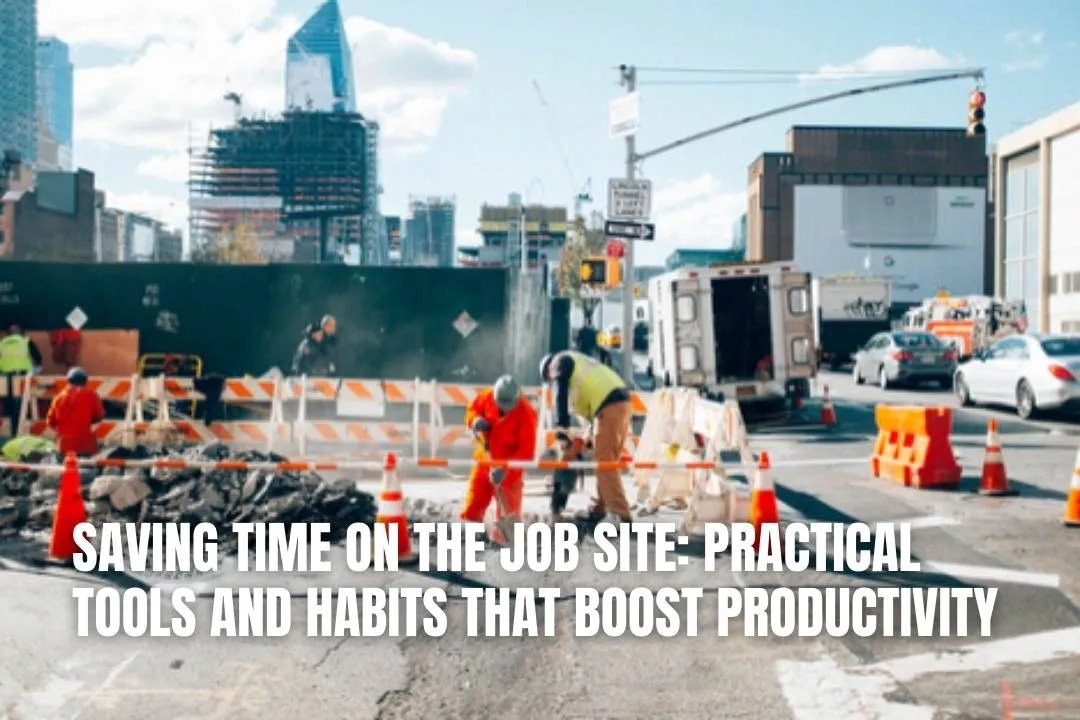
Editorial Disclaimer
This content is published for general information and editorial purposes only. It does not constitute financial, investment, or legal advice, nor should it be relied upon as such. Any mention of companies, platforms, or services does not imply endorsement or recommendation. We are not affiliated with, nor do we accept responsibility for, any third-party entities referenced. Financial markets and company circumstances can change rapidly. Readers should perform their own independent research and seek professional advice before making any financial or investment decisions.
In the fast-paced world of skilled trades, time isn’t just money; it’s margins, morale, and momentum. Whether on construction sites, fabrication floors, or service calls, inefficiencies, even small ones, can cascade into costly delays. Choosing the right gear, such as the best Boa work boots, plays a crucial role in eliminating those delays and maximising efficiency.
The most productive crews understand that work-site efficiency comes from consistent systems, reliable tools, and smart routines. From prep habits to gear upgrades, each decision shapes how smoothly a shift runs.
One of the easiest ways to save time daily is by standardising your crew’s start-of-day setup. High-performing teams often rely on muscle memory and repetition to minimise wasted effort.
A strong setup routine might include:
These steps can save 15–30 minutes per worker each week, a valuable amount of time that adds up quickly.
Efficient teams don’t just work hard; they prepare smart. At the end of each day, crews that prep for tomorrow avoid the chaos of morning delays.
Tactics include:
Next-day planning reduces surprises and keeps momentum going from one shift to the next.
Misused or outdated tools are one of the biggest hidden time drains on job sites. When a tool isn’t right for the job, even simple tasks stretch into multi-step frustrations.
Examples of inefficiencies:
Investing in task-specific, well-maintained equipment yields faster results, fewer mistakes, and enhanced morale.
Footwear might not be the first thing that comes to mind when discussing productivity, but it plays a significant role in time savings, comfort, and even safety.
Take lacing, for example. Traditional boot laces can become muddy, frozen, or frayed, causing delays during gear-up, shift changes, or breaks. That’s where modern lacing systems like the Boa® dial come in.
With a quick turn, workers can tighten or loosen their boots in seconds, even with gloves on. No knots. No retying. Just a consistent, secure fit throughout the day.
Today’s most efficient crews choose gear that saves time. The best Boa work boots combine speed, comfort, and performance to reduce downtime and foot fatigue.
Crews that switch to the best Boa work boots often report quicker prep times and fewer lacing failures, making them a smart choice for modern job sites.
In a high-demand job site, the idea of taking breaks can feel counterintuitive. But short, scheduled microbreaks (3–5 minutes every two hours) actually improve long-term productivity.
These moments give crews time to:
When microbreaks are encouraged and structured, they reduce end-of-day fatigue and maintain quality output.
The most productive crews don’t rely on one trick or tool. They create a culture that values:
In an industry where time is your most valuable asset, staying ahead means working smarter, not just faster. With supportive tools like the best Boa work boots, tradespeople are equipped to meet the challenge head-on.
A standardised start-of-day routine helps your crew work from muscle memory. By pre-checking tools, organising materials near work zones, and stocking safety gear in fixed spots, you can cut down on wasted time each morning. These small actions add up to significant time savings over a week.
Next-day prep involves preparing for the following day's work at the end of the current shift. This includes tasks like walking the site to identify potential issues, loading tools and materials for an early start, and coordinating with other teams. It helps prevent morning delays and keeps the project moving smoothly.
Absolutely. Footwear can make a surprising difference. For instance, boots with modern lacing systems, like the Boa® dial, allow for quick adjustments, even with gloves on. This saves time compared to traditional laces that can get muddy or frozen, and it also improves comfort and reduces foot fatigue, keeping your crew focused.
Yes, they are. Short, scheduled microbreaks of about 3-5 minutes every couple of hours can improve long-term output. These pauses give workers a chance to hydrate, adjust their posture, and mentally regroup. This helps reduce end-of-day fatigue and maintains a high quality of work.
Using the right tool for the job is fundamental to efficiency. When tools are dull, worn-out, or simply incorrect for the task, work slows down, and mistakes are more likely. Investing in purpose-built, well-maintained equipment ensures tasks are completed faster and with better results.
In the fast-paced world of skilled trades, time isn’t just money; it’s margins, morale, and momentum. Whether on construction sites, fabrication floors, or service calls, inefficiencies, even small ones, can cascade into costly delays. Choosing the right gear, such as the best Boa work boots, plays a crucial role in eliminating those delays and maximising efficiency.
The most productive crews understand that work-site efficiency comes from consistent systems, reliable tools, and smart routines. From prep habits to gear upgrades, each decision shapes how smoothly a shift runs.